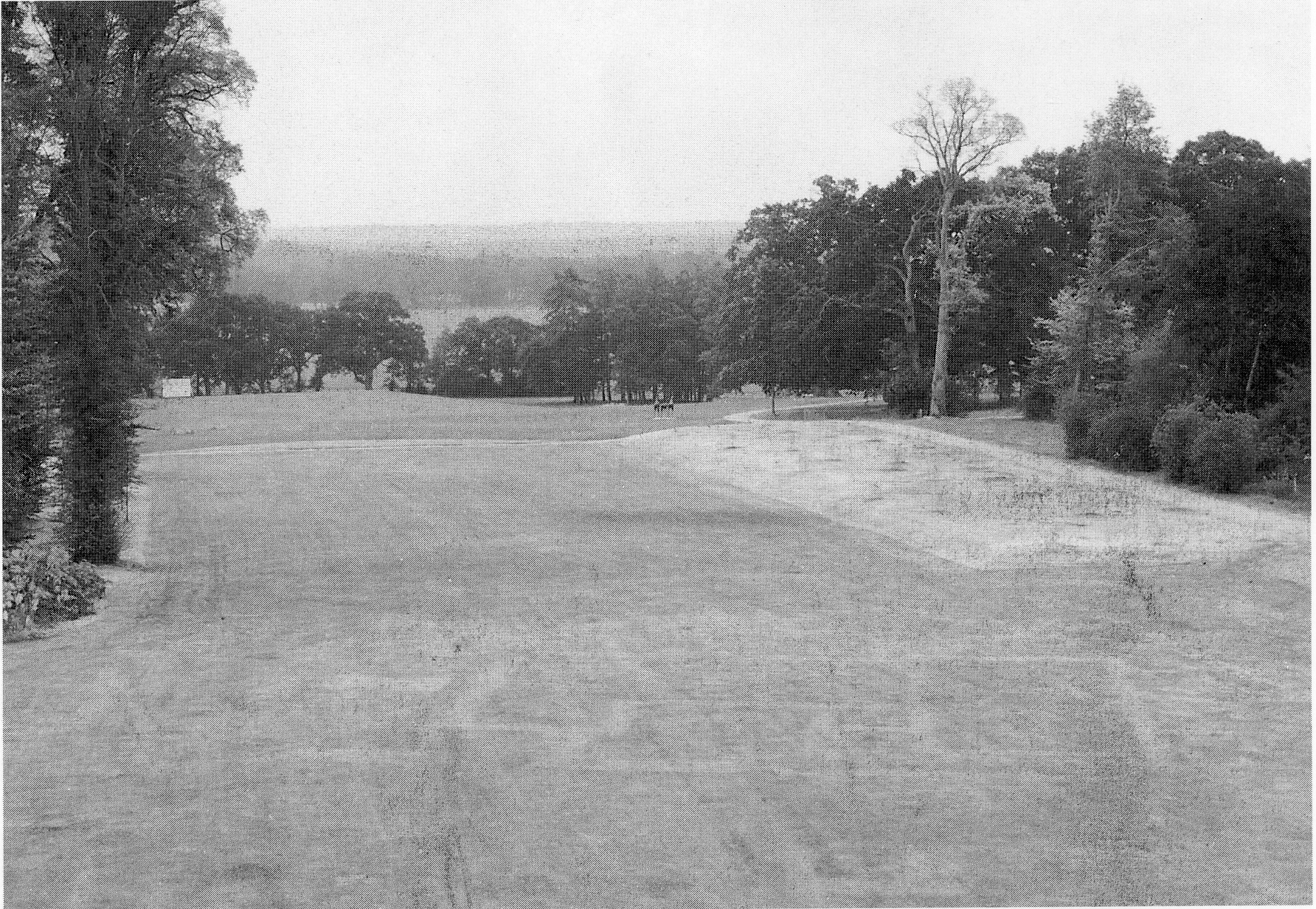The Great Lodge (The Old Lodge)
 North elevation th Great Lodge c. 1725
North elevation th Great Lodge c. 1725
After the Merdon estate was surrendered to the crown in 1552, Edward VI granted the Manor of Merdon to Sir Philip Hoby in the same year ‘to be held in chief for the fortieth part of a knight’s fee’. Sir Philip Hoby is credited with building the Great Lodge in Hursley Park around 1554. However, owing to the legal problems created by the death of Edward VI, which thwarted the progress of the necessary act of parliament, Sir Philip Hoby was unable to enjoy the benefits of the king’s generosity because Mary Tudor revoked the original surrender of the church lands and restored the manor of Merdon to Bishop John White of Winchester. In 1559 the ‘Stewards Roll’ shows evidence of the regranting of the estate by Elizabeth I to William Hoby, half brother of Sir Philip Hoby - this time permanently.
The Great Lodge stood on the site of the present lawn on the southern side of Hursley House, and its traces are still visible from the roof of the house in dry weather. The print of the north elevation of the Great Lodge was made prior to its demolition, probably for record and proposed alteration purposes. The print shows there were two wings - the west wing being wider and longer than the east wing. These wings formed a courtyard on the southern side. The print also shows the garden wall with gates either side of the house; this wall continued round to form an almost square walled garden of about one acre (0.4 hectare). The wings appear to have been part of the original design and not additions. A map dated 1588 (some 33 years after the Great Lodge was built) shows the wings, the garden wall and - to the west - a smaller building roughly where the present bothy stands. This smaller building could be a replacement for the original wooden lodge of 1413, subsequently used as a stable and having a tiled roof. This building could have lasted in part through to about 1728 and being originally made of wood it must have been renovated several times. Also evident in the print are the Great Lodge’s mullioned windows which are small in number and size. These windows, together with the impractical design and run down state of the building, were among the decisive factors that resulted in the demolition of the Great Lodge in the 1720s — some 170 years after its erection.
William Hoby was a staunch churchman and an enthusiastic musician. He was responsible with one John Hopkins for the first ‘sounding out the Psalms of David in metrical verse’. It is said that ‘he employed much time in singing his psalms to his organ for his own Godly Solace’. When William Hoby died, in the latter part of the sixteenth century, his son Giles inherited the estate. In 1600, Giles Hoby sold Merdon Castle and Manor to Sir Thomas Clerke, his father-in-law, but kept a life interest in the Great Lodge and surrounding land at Hursley.
 Outline of Great Lodge foundations, photographed from the roof of H ursley House in 1976
Outline of Great Lodge foundations, photographed from the roof of H ursley House in 1976